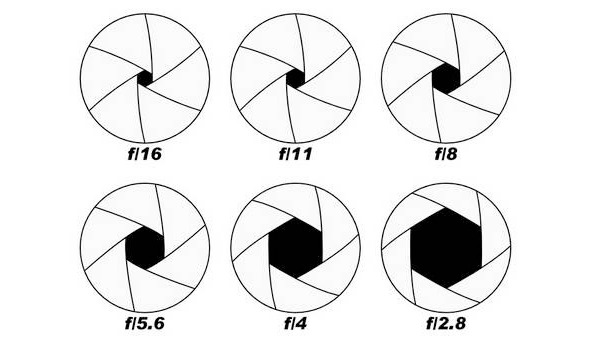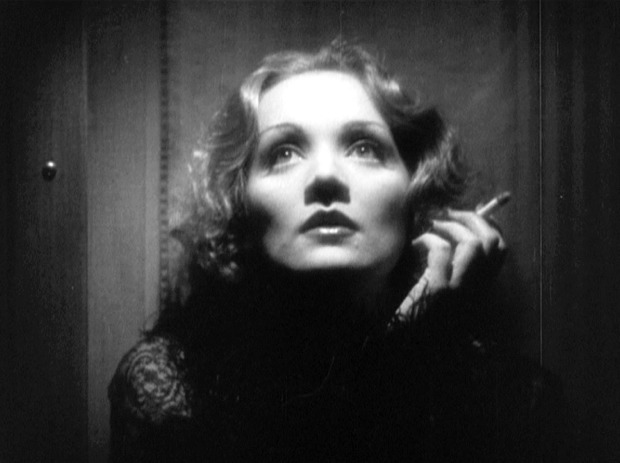
Бесплатный фрагмент - English Vocabulary for Photographers
APERTURE |'apətʃə| — это отверстие с переменным диаметром, которое позволяет контролировать количество света, проходящего через объектив
Aperture is the size of the opening in the lens. Think of the lens as a window large windows let in more light, while small windows let in less light. A wide open aperture will let more light into the image for a brighter photo, while a smaller aperture lets in less light.
Aperture is measured in f-stops; a small f-stop like f/1.8 is a wide opening, a large f-stop like f/22 is a very narrow one. Aperture is one of three camera settings that determine an image’s exposure, or how light or dark it is.
Aperture also affects how much of the image is in focus wide apertures result in that creamy, unfocused background while narrow apertures keep more of the image sharp.

relative aperture — а) светосила; б) относительное отверстие
Словосочетания:
to apply aperture compensation — корректировать апертурное искажение
aperture correction — апертурная коррекция
aperture mask — теневая маска
ACCENT LIGHT — точечный акцентирующий свет; направленное освещение; акцентирующий свет. Направленный свет дает на объекте резко выраженные света, тени и в некоторых случаях блики.
The directional lighting, the task of which is to highlight details or the whole object to attract the attention to them.
AL SERVO or CONTINUOUS FOCUS — непрерывный фокус, следящий
AI-Servo tracks focus on moving subjects so as your subject moves closer or moves further away your camera constantly updates focus to keep the subject as sharp as possible.
До тех пор, пока кнопка спуска находится в полунажатии, автофокус непрерывно работает, тем самым удерживая объект в зоне резкости.
ASPECT RATIO — понятие в фотографии, характеризующее формат изображения. Соотноше́ние сторо́н экра́на или Отноше́ние ширины́ ка́дра к высоте́.
If you’ve ever printed images before, you’ve probably noticed that an 8 x 10 usually crops from the original image. That’s due to aspect ratio. Aspect ratio is simply the ratio of the height to width. An 8 x 10 has an equal aspect ratio to a 4 x 5, but a 4 x 7 image is a bit wider.
You can change the aspect ratio in your camera if you know how you’d like to print your image, or you can crop your photo when you edit it to the right ratio.
BACKGROUND LIGHT — фоновый свет
A background light is used to illuminate the background area of a set. The background light will also provide separation between the subject and the background.
Фоновый свет используется для подсветки фоновой области набора. Фоновый свет также обеспечивает разделение между объектом и фоном.
BARN DOORS — шторки. Приспособление, которое крепится к рефлектору и помогает контролировать распространение света.
Barn doors are light modifiers that shape and direct light. They are flexible to use and can create focused light. They also make a variety of shapes.

BOKEH — боке, размытость, нечеткость.
Bokeh is the orbs created when lights are out of focus in an image. It’s a neat effect to have in the background of a photo, created through wide apertures.
BURST MODE — режим серийной съемки
You can take photos one at a time. Or, you can turn the burst mode on and the camera will continue snapping photos as long as you hold the button down, or until the buffer is full (which is a fancy way of saying the camera can’t process any more).
Burst speeds differ based on what camera you own, some are faster than others. Just how fast is written in «fps» or frames (pictures) per second.
BUTTERFLY LIGHTING — освещение «бабочка»
It is a portrait lighting pattern where the key light is placed above and directly centered with a subject’s face. This creates a shadow under the nose that resembles a butterfly.
Вариант фронтального освещения, при котором рисующий свет установлен перед объектом съемки и над ним. Иногда создает тень под носом в форме бабочки.

CONTRAST- контраст. Соотношение уровней яркости самого темного и самого светлого сегмента изображения. Картинка с большим перепадом яркости называется контрастной.
Contrast is a tool that photographers use to direct viewers’ attention to their subject. There are two types: Tonal Contrast and Color Contrast. Tonal Contrast refers to the difference in tones from the lightest tone to the darkest tone, in other words, the difference in tones from white to gray to black.
Color Contrast refers to the way colors interact with each other.
DEPTH OF FIELD — глубина резкости пространственного изображения; объёмность поля зрения
It’s the distance between the nearest and furthest elements in a scene that appear to be «acceptably sharp» in an image. Depth of field is a photography term that refers to how much of the image is in focus. The camera will focus on one distance, but there’s a range of distance in front and behind that point that stays sharp — that’s depth of field.
Portraits often have a soft, unfocused background — this is a shallow depth of field.
Это — расстояние вдоль оптической оси объектива между двумя плоскостями в пространстве предметов, в пределах которого объекты отображаются в сопряжённой фокальной плоскости субъективно резко.
На портретах, как правило, задний фон мягкий, вне зоны резкости, что создает глубину кадра.
DIGITAL VS. OPTICAL — цифровой или оптический
Digital and optical are important terms to understand when shopping for a new camera. Digital means the effect is achieved through software, not physical parts of the camera. Optical is always better than digital. These terms are usually used when referring to zoom (on a compact camera) as well as image stabilization.
DIFFUSION REFLECTOR — рассеиватель, рассеивающий рефлектор
It is the way to reflect the light or other waves or particles from a surface such that a ray incident on the surface is scattered at many angles rather than at just one angle as in the case of specular reflection.
Специальное приспособление из полупрозрачной ткани или пластика, служи для изменения параметров светового потока. Проходя сквозь такой рассеиватель, лучи света преломляются под разными углами и расходятся во все стороны. Поверхность такого диффузора превращается в новый источник света, который одновременно освещает объект лучами, приходящими с самых разных направлений, в итоге резкие границы тени размываются, а сами тени становятся мягкими и почти прозрачными.
EXPOSURE — выдержка
Exposure is how light or dark an image is. An image is created when the camera sensor (or film strip) is exposed to light — that’s where the term originates. A dark photo is considered underexposed, or it wasn’t exposed to enough light; a light photo is overexposed or exposed to too much light. Exposure is controlled through aperture, shutter speed and ISO (more on those last two in a bit). Exposure is also subjective — there is no «right» exposure.
Количество света, попадающего на светочувствительный фотоматериал за определенный промежуток времени. Три основных параметра, влияющие на экспозицию, — это чувствительность, выдержка и диафрагма.
EXPOSURE COMPENSATION — коррекция экспозиции, компенсация экспозиции, экспокорре́кция
Exposure compensation is a way to tell the camera that you’d like the exposure to be lighter or darker. Exposure compensation can be used on some automated modes and semi-automated modes like aperture priority. It’s measured in stops of light, with negative numbers resulting in a darker image and positive ones creating a brighter shot.
Принудительное введение поправки в измеренную экспозицию для компенсации ошибок измерения или достижения художественных эффектов.
FOCUS — фокус, фокусироваться
When your eyes focus on an object that’s close to you, the objects far away will appear blurry. The common photography term «focus» has the same meaning. Something that is in focus is sharp, while an object that is out-of-focus isn’t sharp. Different focus areas determine if the camera is focusing on multiple points or one user-selected point.
Словосочетания
to bring smth into focus — навести на резкость, сфокусировать
focus control — регулировка фокуса
FLASH SYNC — синхронизация фотовспышки, согласование моментов срабатывания фотовспышки и затвора фотоаппарата, необходимое для полноценного экспонирования импульсным освещением фотосенсора. Синхронизация может осуществляться вручную на длительной выдержке, или автоматически.
You probably know that the flash is a burst of light — flash sync determines when the flash fires. Normally, the flash fires at the beginning of the photo, but changing the flash sync mode adjusts when that happens. The rear curtain flash sync mode, for example, fires the flash at the end of the photo instead of the beginning.
FILL LIGHT — заполняющий (выравнивающий) свет.
Этот вид освещения нужен для подсветки теней, появляющихся из-за использования рисующим светом. Выполняется, как правило, при помощи осветительного прибора, установленного около камеры и ниже ее.
Бесплатный фрагмент закончился.
Купите книгу, чтобы продолжить чтение.